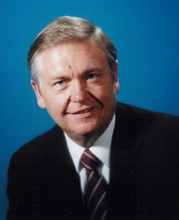
By Kirk L.Smick, OD, FAAO
If your community is like mine, the patients visiting your practice are becoming more diverse. Understanding how to best accommodate their needs is the first step to ensuring your practice will continue to grow into the next decade.
Changing Demographics = Opportunity
A quick look at the profile of my community, Clayton County, Ga., made it apparent that our practice needed to shift to accommodate a more diverse patient base. Fifteen years ago, Caucasians represented 83 percent of the population. Over the last decade, and particularly, the last five years, our community as seen an influx of Hispanic, African-American and Asian families. Since many of the older Hispanic and Asian patients did not even speak English as a second language, we decided to make a second language an additional requirement for open positions whenever we felt it necessary.
Of the 225 to 250 patients our practice sees daily, 8 to 10 percent require translating services.Rather than pay up to $1,500 a month, as we were, for exam room interpreters, we now have staffers who can speak Spanish, German,Korean, Vietnamese, Laotian and Cambodian, among other languages. Translation is provided not just in the exam room, but at the check-in/check-out desk in the reception area, at the insurance desk and in the dispensary.
In addition to accommodating a current need, creating a multiculturally friendly practice in a demographically shifting community is a self-fulfilling prophecy. Word gets out in minority and immigrant communities that your practice can accommodate their population’sneeds, and their friends and family are soon in your exam chair, as well.
Create More Diverse Medical Model
With a more diverse patient base comes the opportunity to educate those patients about the greater risks to their eye health. African-Americans, for instance, who comprise 55 percent of our patient population, are six to eight times more likely to be afflicted with diabetes and glaucoma.As another example,Asian people, also an expanding population for us, are more likely to have myopia than non-Asians.
To ensure these patients understand the risks to their eyes, we take advantage of educational materials supplied by companies like Transitions Optical, such as brochures in Spanish that explain conditions such as cataracts. One exam room aid we use that comes in Chinese, for instance, is a hand-held plastic flip chart that explains the sequence of the eye exam sopatients know what to expect. We also have pictures of eye conditions withcaptions inSpanish and other languagesto better explain diagnoses.
Also, keep in mind ethnic-specific needs in your dispensary. Due to facial feature differences from non-Asians, dispensaries that seek to accommodate Asian patients need frames with contours that can fit a slightly wider face, as well as adjustable nose pads. In addition, have your opticians or office manager closely track buying trends among your minority and immigrant-based patients so you will have the frame styles on hand that are most popular in their communities. Like any demographic group, these new patients to your practice come from population groups with distinct styles and buying preferences.
A Multicultural, Future-Ready Practice
We all see the population demographics shifting in each Census report, and in other research.Your practice needs to keep pace withthe changing face of your community,and accommodate the needs of your shifting patient base in order to flourish.
Related ROB Article:
Building a Multicultural Practice
Kirk Smick, OD, is chief of optometry services at Clayton Eye Center, and owner of the practice. He currently serves as a member of Transitions Optical’s Multicultural Advisory Board. To contact him: claytoneye@aol.com





















